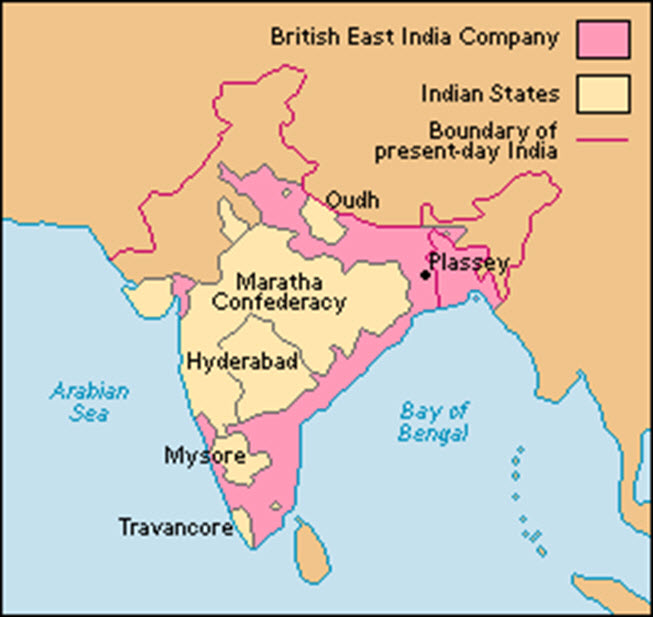


THE FIRST ANGLO-
1775 -
xxxxxAs we have seen, the defeat of the Maratha at the hands of the Afghans at the Battle of Panipat in 1761 put pay to their hopes of succeeding the Mughals as rulers of India. But they were not finished yet. As the Mughal Empire went into decline, they formed a confederacy of five powerful chiefdoms. In 1775, soon after arriving as the new governor of Bengal, Warren Hastings sought to reduce the threat from the Maratha by intervening in a power struggle within the confederacy. The plan misfired. In 1779 a British force was defeated at Wadgaon, near Poona, and three years later the British had to abandon their leadership candidate and come to terms with the peshwa or leader of the Maratha. Further trouble broke out with the Maratha in 1803, but, as we shall see, they were finally defeated by the British and their lands confiscated in 1818 (G3c). During the first Anglo-
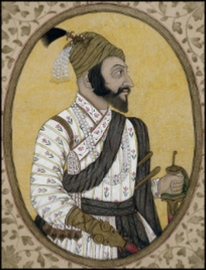 xxxxxThe Maratha kingdom was established by Shivaji in 1674, despite attacks upon it by the Mughal leader Aurangzeb. Then during the first half of the 18th century the Maratha made gains at the expense of the declining Mughal Empire. By means of a loose confederation of powerful independent families they extended their control over much of central and northern India. At one time it looked as though they would become the dominant power on the sub continent. However, in 1747, with the death of Nadir Shah of Iran, there emerged the Afghan leader, Ahmad Shah Durrani. As we have seen, it was he who, in January 1761 met up with the Maratha army and, at the Battle of Panipat, virtually wiped it out, putting an end to their hopes of succeeding the Mughals as rulers of India.
xxxxxThe Maratha kingdom was established by Shivaji in 1674, despite attacks upon it by the Mughal leader Aurangzeb. Then during the first half of the 18th century the Maratha made gains at the expense of the declining Mughal Empire. By means of a loose confederation of powerful independent families they extended their control over much of central and northern India. At one time it looked as though they would become the dominant power on the sub continent. However, in 1747, with the death of Nadir Shah of Iran, there emerged the Afghan leader, Ahmad Shah Durrani. As we have seen, it was he who, in January 1761 met up with the Maratha army and, at the Battle of Panipat, virtually wiped it out, putting an end to their hopes of succeeding the Mughals as rulers of India.
xxxxxBut the Maratha were a warrior people, and whilst their dream of ruling India had been somewhat shattered at Panipat, they were ready to continue their fight for survival, not only against the remnants of Mughal power, but also against the British, now beginning to take a predominant role in Indian affairs. Their leader, Peshwa Balaji Baji Rao became the head of a loose confederacy of five northern chiefs. Each developing into military dictatorships, this uneasy union emerged as the most powerful element in the political chaos which followed the fall of the Mughal Empire and the return of Durrani's army to Afghanistan.
xxxxxThus by 1765 post-
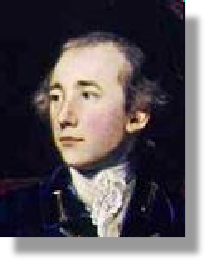 xxxxxSuch then was the situation which confronted the new governor of Bengal, Warren Hastings (illustrated) when he arrived in India in 1772. He was determined to consolidate the territorial gains made by his predecessor Robert Clive but, at the same time, he was under instructions to avoid conflict and to simply strengthen Bengal as a base for the safe conduct of trade. However, in the unstable situation then existing, keeping out of entanglements with a myriad of local power blocs was easier said than done. Many were anxious to gain British support against their rivals, and this provided ample opportunity for wheeling and dealing, and the bribery and extortion that went with it.
xxxxxSuch then was the situation which confronted the new governor of Bengal, Warren Hastings (illustrated) when he arrived in India in 1772. He was determined to consolidate the territorial gains made by his predecessor Robert Clive but, at the same time, he was under instructions to avoid conflict and to simply strengthen Bengal as a base for the safe conduct of trade. However, in the unstable situation then existing, keeping out of entanglements with a myriad of local power blocs was easier said than done. Many were anxious to gain British support against their rivals, and this provided ample opportunity for wheeling and dealing, and the bribery and extortion that went with it.
xxxxxIn 1775, attempting to weaken the power of the Marathas -
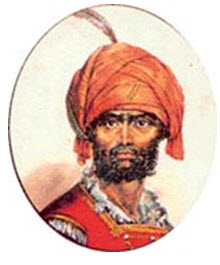 xxxxxMeanwhile, in 1780, while this war was in progress, the British found themselves facing a greater threat. Hyder Ali (c1720-
xxxxxMeanwhile, in 1780, while this war was in progress, the British found themselves facing a greater threat. Hyder Ali (c1720-
xxxxxAgainstxsuch odds, it is to Hastings' credit that the company emerged unscathed and, indeed, strengthened on both fronts. He sent forces to save Madras, and then set about dividing his foes. By 1781 he had swung the military balance in his favour and defeated Hyder Ali at the Battle of Porto Novo. Eventually, the state of Mysore agreed to the restoration of the status quo by the Treaty of Mangalore in 1784. Meanwhile the French, arriving too late to play a decisive role, were held in check until the peace settlement, reached in Paris in 1783. By his astute management of the company's 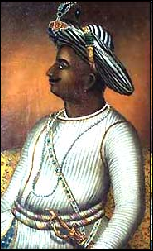 military forces and some skilful diplomacy amongst rival groups, he ensured the continuance of British power in India. It was during these campaigns, however, that his actions -
military forces and some skilful diplomacy amongst rival groups, he ensured the continuance of British power in India. It was during these campaigns, however, that his actions -
xxxxxThe third and fourth of the Mysore Wars were waged against Hyder Ali's son, the colourful Tippu Sahib (illustrated). In 1792 he was forced to give up half his domains, and then in 1799 (G3b) he was killed when the British stormed and captured his capital Seringapatam and took over control of the state.
xxxxxThe Maratha took a little longer to subdue. The second war, from 1803-
Acknowledgements
Sivaji: 1680/87, artist unknown – British Museum, London. Hastings: detail, by the English portrait painter Sir Joshua Reynolds (1723-
G3a-
Including:
The Anglo-
Mysore Wars


xxxxxIncidentally, in 1947 the state of Mysore became part of an independent India, and was renamed Karnataka in 1973. MAP BELOW
MAJOR REGIONAL POWERS IN INDIA AROUND THIS TIME
